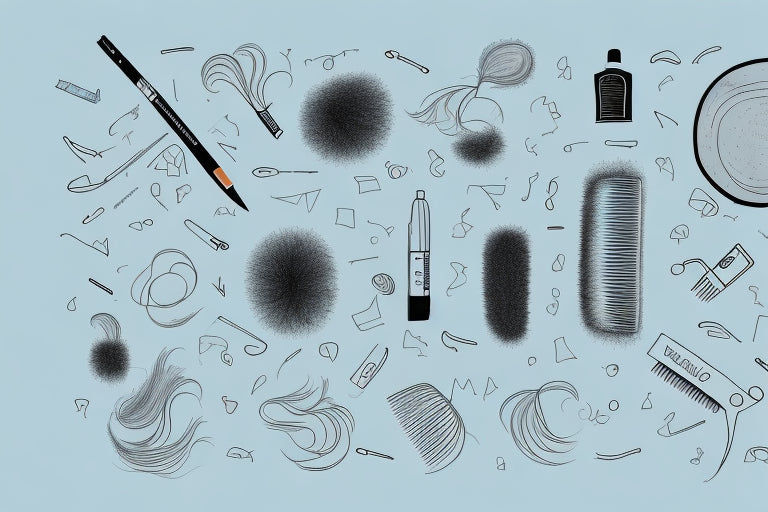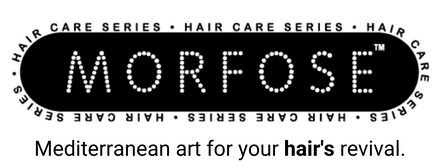The Worst Hair Habits You Should Avoid
Posted by MORFOSE COSMETICS

The Worst Hair Habits You Should Avoid
Maintaining healthy and beautiful hair takes dedication, but some habits may be doing you more harm than good. From overwashing to excessive heat styling, certain actions can strip your strands of their natural oils, weaken hair structure, and cause damage that leads to split ends, breakage, and hair loss. If you want to avoid damaging your hair, it’s important to know which habits to steer clear of. Read on to learn more about the worst hair habits and how to break them.
Overwashing Your Hair
While keeping your hair clean is essential, overwashing can harm your hair. Shampooing every day or every other day can strip your hair of its natural oils, making it dry and frizzy. The frequency of washing should depend on your hair type and how much oil it produces, so it's best to listen to your scalp and wash as needed. If you have a dry scalp or dry hair, washing twice a week is sufficient. However, if you have an oily scalp, you might need to wash every other day.
Stripping Natural Oils
Harsh shampoos or hot water can strip your hair of its natural oils, which protect your strands and keep them hydrated. If you want to avoid this issue, use a sulfate-free and gentle shampoo that won't strip your hair. Also, consider washing your hair with lukewarm or cool water instead of hot water, which can cause damage.
Another way to protect your hair from losing its natural oils is to use a hair mask once a week. A hair mask is a deep conditioning treatment that can help to nourish and hydrate your hair, leaving it soft and shiny. You can make a hair mask at home using natural ingredients like avocado, coconut oil, or honey. Simply apply the mask to your hair, leave it on for 30 minutes, and rinse it off with cool water.
Damaging Hair Follicles
Brushing your hair too hard, using tight elastic bands, or wearing tight hats and helmets can all damage your hair follicles, causing them to break and leading to hair loss over time. Try using a wide-toothed comb instead of a hairbrush, and avoid hairstyles that pull your hair tightly, like braids, buns, or ponytails.
In addition to using a wide-toothed comb, you can also use a detangling spray to make brushing your hair easier and less damaging. A detangling spray can help to smooth out your hair and prevent tangles, making it easier to comb through without pulling or breaking your hair.
Finally, if you're experiencing hair loss or thinning, it's important to speak with a dermatologist or hair specialist. They can help you identify the cause of your hair loss and recommend treatments to help restore your hair.
Using Excessive Heat Styling Tools
Curling irons, straighteners, and blow dryers are all great tools for styling your hair, but using them too often and at high temperatures can do significant damage to your hair structure. Heat can weaken the protein bonds in your hair and cause split ends and breakage. If you must use heat styling, make sure to use a heat protectant spray to minimize the damage. Also, try to use the lowest temperature setting possible to style your hair and avoid putting the styling tool too close to your scalp.
Weakening Hair Structure
Heat styling tools, like flat irons and curling irons, can weaken the hair structure and cause damage to your hair. The heat can dehydrate your hair, causing it to lose elasticity and become more prone to breakage. The best way to minimize the damage is to use a heat protectant and limit heat styling to once or twice a week.
Another way to strengthen your hair structure is to use hair masks and deep conditioning treatments. These treatments can help to restore moisture and nourishment to your hair, making it less susceptible to damage from heat styling tools. You can also try using a leave-in conditioner to protect your hair from heat damage.
Causing Split Ends and Breakage
When you apply too much heat on your hair, it can cause split ends and breakage, making your hair look dull and damaged. You can minimize split ends through regular hair trims and avoiding heat styling. Make sure to use hair serums and oils to keep your hair moisturized and nourished.
Another way to prevent split ends and breakage is to avoid using hair ties with metal clasps, as they can cause damage to your hair. Instead, opt for hair ties made of soft fabric or elastic.
Other Tips for Healthy Hair
In addition to limiting heat styling and using protective products, there are other things you can do to promote healthy hair. Eating a balanced diet with plenty of vitamins and minerals can help to nourish your hair from the inside out.
Make sure to drink plenty of water to keep your hair hydrated and healthy. Avoid using harsh chemicals on your hair, such as bleach or hair color, as they can cause damage and breakage.
Finally, be gentle with your hair when brushing and styling. Use a wide-toothed comb to detangle your hair, and avoid pulling or tugging on it. With these tips, you can keep your hair healthy and beautiful, even with occasional heat styling.
Brushing Wet Hair
When it comes to hair care, brushing wet hair is a common mistake that many people make. Wet hair is more susceptible to damage than dry hair, and brushing it can cause more harm than good. If you're not careful, you can stretch and snap your hair strands, leading to breakage and split ends.
So, what should you do instead? The key is to be gentle and use the right tools. Instead of a brush, opt for a wide-toothed comb. This will help you detangle your hair without causing too much stress on your strands.
Stretching and Snapping Hair Strands
Stretching and snapping hair strands is a common problem when it comes to detangling wet hair. This can cause hair breakage and lead to frizzy hair. If you're noticing that your hair is breaking more than usual, it could be due to how you're detangling it.
One way to avoid this is to use a leave-in conditioner or detangling spray. This will help to soften your hair and make it easier to comb through. When you're detangling, start at the ends and work your way up gradually. This will help to avoid any knots or tangles that could cause you to pull too hard.
Proper Techniques for Detangling
Detangling your hair properly is essential if you want to avoid damage and breakage. There are a few key techniques that you should keep in mind when detangling your hair, especially when it's wet.
Firstly, make sure to apply a leave-in conditioner or detangling spray before you start. This will help to soften your hair and make it easier to comb through. Secondly, start at the ends and work your way up gradually. This will help to avoid any knots or tangles that could cause you to pull too hard. Finally, use a wide-toothed comb and be gentle. Don't pull too hard or cause tension on your hair.
By following these simple tips, you can detangle your hair safely and avoid damage and breakage. Remember, your hair is delicate, and it's important to treat it with care, especially when it's wet.
Neglecting Regular Hair Trims
Getting regular hair trims is essential to maintaining healthy hair. Trimming your hair every six to eight weeks gets rid of split ends and keeps your hair looking fresh and healthy. It also helps your hair grow faster and stronger. Neglecting your hair trims can lead to further damage, like split ends and breakage.
The Importance of Trimming Split Ends
Split ends occur when the ends of your hair become frayed and start to split. This can happen due to a variety of reasons, including excessive heat styling, chemical treatments, and harsh brushing. Cutting the split ends helps to prevent the split from traveling further up the hair strand, which can lead to further breakage. Trimming your hair regularly will keep split ends in check and make your hair look healthier and fuller.
Furthermore, split ends can also make your hair look dull and lifeless. When the ends of your hair are split, they don't reflect light as well as healthy hair, which can make your hair appear flat and lackluster. By trimming your hair regularly, you can get rid of split ends and restore the natural shine and vibrancy of your hair.
How Often to Trim for Optimal Hair Health
The frequency of hair trims can depend on your hair type and how fast your hair grows. On average, it is recommended to trim your hair every six to eight weeks. However, if your hair is prone to split ends or you're trying to grow your hair longer, you may want to trim your hair every four weeks.
In addition, if you have curly or textured hair, you may want to consider trimming your hair more frequently. Curly hair tends to be drier than straight hair, which can make it more prone to split ends and breakage. By trimming your hair every four to six weeks, you can keep your curls looking healthy and bouncy.
Ultimately, the key to maintaining healthy hair is to listen to your hair's needs. If you notice that your hair is looking dull, frizzy, or damaged, it may be time for a trim. By getting regular hair trims, you can keep your hair looking and feeling its best.
Tight Hairstyles and Traction AlopeciaHairstyles like braids, buns, and ponytails can put tension on your hair, leading to a type of hair loss called traction alopecia. Tight hairstyles can pull your hair out of its follicles, causing damage and leading to bald patches.
The Dangers of Constant Tension on Hair
Constant tension on your hair can weaken the hair shaft and damage your hair follicles. This can cause hair loss and changes to your hair texture. Avoid tight hairstyles and try wearing looser hairstyles to minimize the risk of traction alopecia.
Alternatives to Tight Hairstyles
If you're looking for stylish alternatives to tight hairstyles that won't cause long-term damage to your hair, consider loose braids or a low ponytail. Opt for scrunchies or hair ties that won't pull or damage your hair. You can also add hair accessories like barrettes or headbands to jazz up your hairstyle.
The Bottom Line
Avoiding the worst hair habits is integral to healthy hair. While we may be habitual in some of these practices, incorporating proper hair care techniques will undoubtedly keep hair healthy and strong for beautiful locks. Choose with care and build habits that will support your hair goals.


